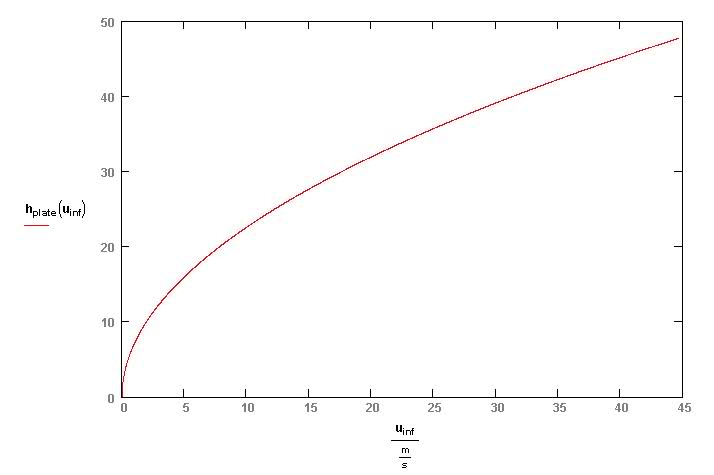

The heat being removed from the fluid creates the internal gradient, because there is a resistance to the flow of heat within the fluid - just as there is within the air doing the cooling, while the metal separating the fluids also has a gradient across its cross sectional area. In the case of a radiator, for example, there is a thermal gradient within the internal fluid, within the metal separating the fluid from the cooling air, and within the air in contact with the metal thus the two substances exchanging heat are not in direct contact. As a practical matter, no such substances exist all substances present resistance to the flow of heat. One of the keys to remember is that the absolute law relates to two substances, each directly in contact with each other, and with no resistance to the flow of heat within them. Finally, in the case of heat transfer by thermal radiation, Newton's law of cooling is not true. This condition is generally true in thermal conduction (where it is guaranteed by Fourier's law), but it is often only approximately true in conditions of convective heat transfer, where a number of physical processes make effective heat transfer coefficients somewhat dependent on temperature differences.

Newton's law of cooling states that the rate of heat loss of a body is proportional to the difference in temperatures between the body and its surroundings. As such, it is equivalent to a statement that the heat transfer coefficient, which mediates between heat losses and temperature differences, is a constant. One complication to the heat transfer process is Newton's Law of Cooling, although it does not apply to all three methods of heat transfer outlined above: Heat transfer will occur in a direction that increases the entropy of the collection of systems. Heat transfer changes the internal energy of the systems from which and to which the energy is transferred. The direction of heat transfer is from a region of high temperature to another region of lower temperature, and is governed by the Second Law of Thermodynamics. Radiation, which is how the heat of the Sun gets to us through the vacuum of space. Heat is transferred by one or more of three processes.Ĭonduction, an example of which is having the objects in physical contact.Ĭonvection, in which the heat is transferred though a medium, such as air, so it's a slower, much less efficient process. Longer more detailed answer, based on Wikipedia Heat and Temperature ISBN 978-8-2.The greater the temperature difference, the greater the rate at which heat transfers. Fundamentals of Heat and Mass Transfer (6 ed.). mass flow rate 100 GPM pump -> 5.18 kg/s. Thermal oil specs: Kinematic Viscosity 10,78 cst (or mm2/s) Density: 822,1 kg/m3. "Jackrabbit ears: surface temperatures and vascular responses". The desired bitumen temperature is 320F which is also the approximated temperature of the thermail oil flowing in the coils (2 pipes) inside the tank. ^ "VII.H.4 Development of a Thermal and Water Management System for PEM Fuel Cells" (PDF).^ "The Design of Chart Heat Exchangers".^ "Radiator Fin Machine or Machinery".International Journal of Heat and Mass Transfer. "Geometric optimization of isothermal cavities according to Bejan's theory". This is the efficiency for an array of fins. is the sum of the heat transfer from the unfinned base area and all of the fins. With these assumptions, conservation of energy can be used to create an energy balance for a differential cross section of the fin: Q ˙ ( x + d x ) = Q ˙ ( x ) + d Q ˙ c o n v. Uniform convection across the surface area.Constant material properties (independent of temperature).To create a tractable equation for the heat transfer of a fin, many assumptions need to be made: One-piece finned heat sinks are produced by extrusion, casting, skiving, or milling. Thus, adding a fin to an object, increases the surface area and can sometimes be an economical solution to heat transfer problems. Sometimes it is not feasible or economical to change the first two options. Increasing the temperature gradient between the object and the environment, increasing the convection heat transfer coefficient, or increasing the surface area of the object increases the heat transfer. The amount of conduction, convection, or radiation of an object determines the amount of heat it transfers. In the study of heat transfer, fins are surfaces that extend from an object to increase the rate of heat transfer to or from the environment by increasing convection.


 0 kommentar(er)
0 kommentar(er)
